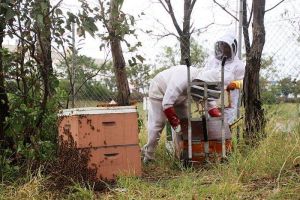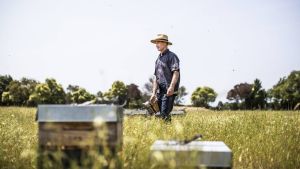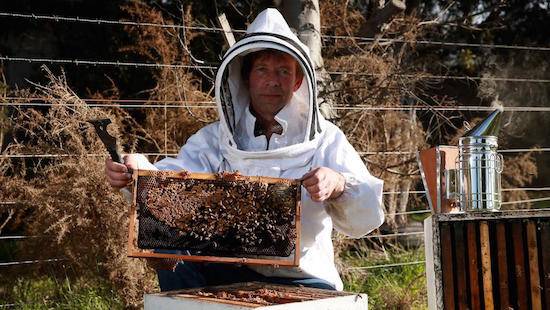ABOUT 40 per cent of the Victorian honey bee hives used for almond pollination have been unavailable this season after being struck with nosema disease.
Trevor Monson, from Monsons Honey and Pollination, co-ordinates 97,000 hives from 165 apiarists, of which about 25 per cent are from Victoria, for 18 Robinvale almond orchards from July to September. Mr Monson likened this season’s loss to colony collapse.
“Some hives haven’t been available and some come up here and then have to be sent back,” he said.“Between 30-40 per cent of Victorian hives (for almond pollination) have been hit by nosema, because the bees are nutritionally run down from a poor season.“They talk about colony collapse in the US. In Victoria this year we’ve experienced that. It will be a financial problem for some people.”A Gippsland commercial apiarist has highlighted biosecurity concerns from the growth of hobby beekeepers. Phillip Island Honey’s David Severino held a public meeting last Thursday about how to contain an outbreak of the honey bee disease, American foulbrood. Mr Severino took 140 hives from Phillip Island to an almond orchard in Robinvale last month. Agriculture Victoria apiary inspectors destroyed 27 after they were found to be infected with AFB, a common bacterial disease found around Australia that infects managed and feral hives, and kills bees at a larval stage. Mr Severino said there were about 40 recreational beekeepers in the area, some unregistered, which made containment of AFB harder. “Consequently we don’t know where bee hives are. Many (apiarists) are not up-to-date on their skills,” he said.
Mr Monson urged experienced beekeepers to act as mentors, saying education and resources were crucial for disease control. “The (agriculture) department doesn’t have the time so the beekeeping industry has to step up and lend a hand,” he said. “If beekeepers aren’t up on what to look for then, yes, there’s a problem.”






